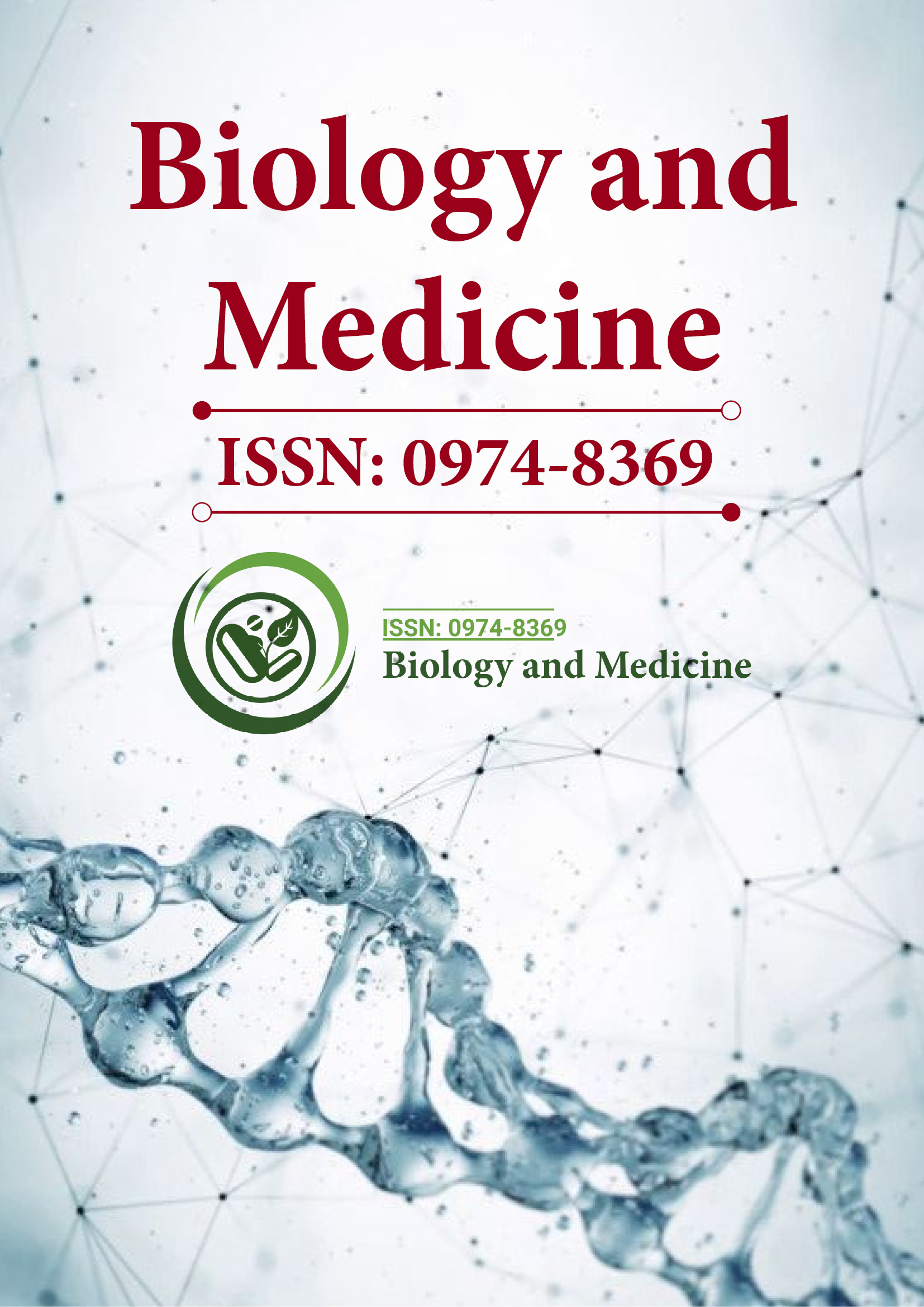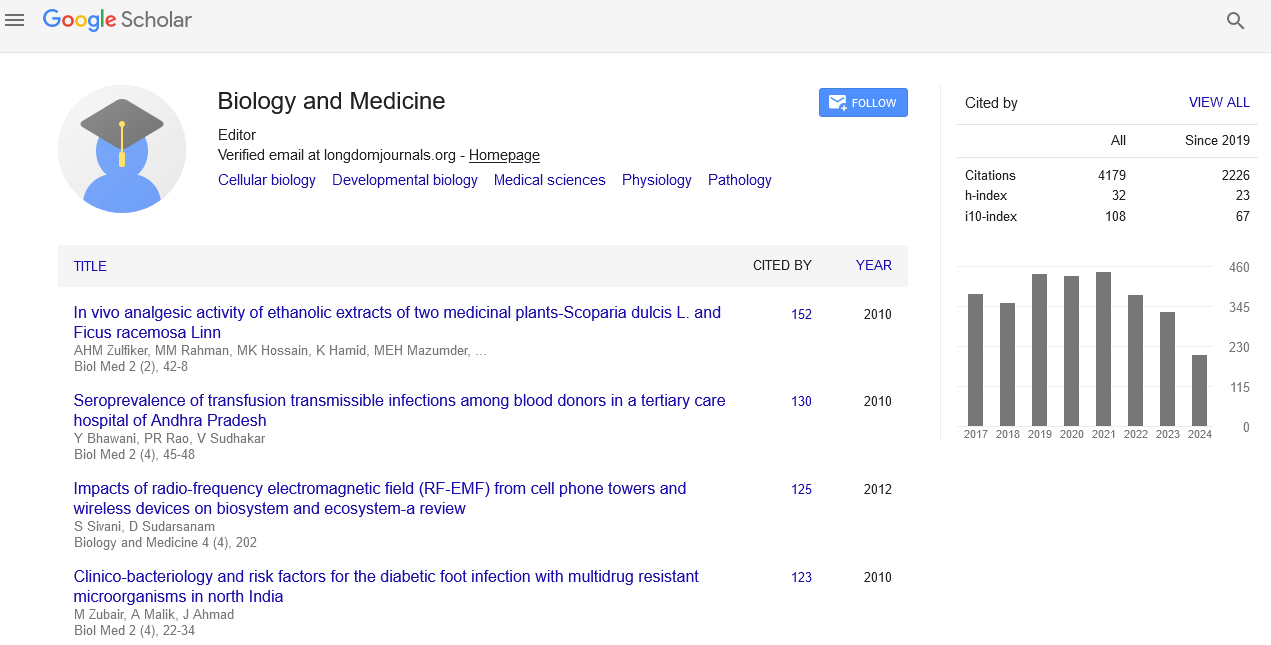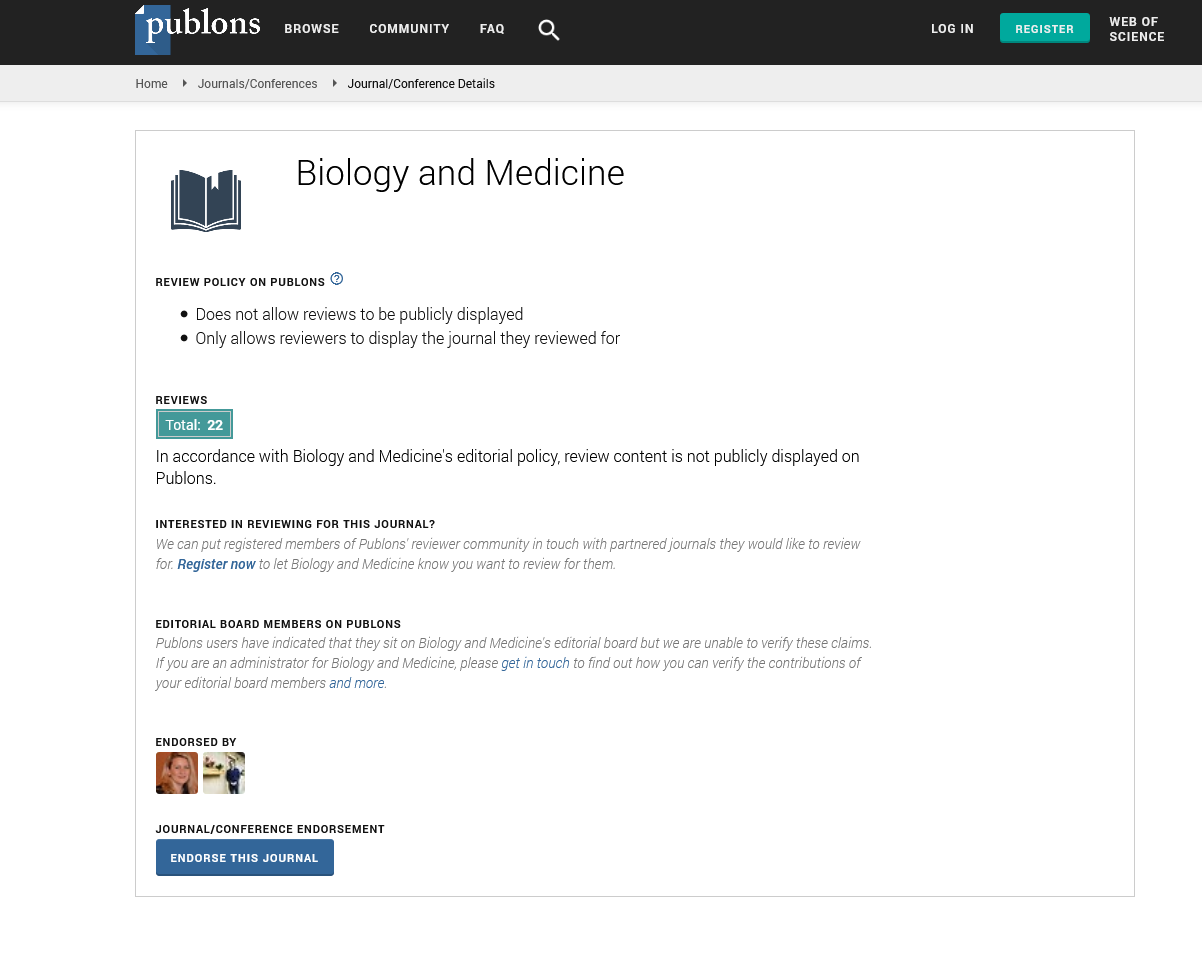Indexed In
- Open J Gate
- Genamics JournalSeek
- CiteFactor
- Cosmos IF
- Scimago
- Ulrich's Periodicals Directory
- Electronic Journals Library
- RefSeek
- Hamdard University
- EBSCO A-Z
- Directory of Abstract Indexing for Journals
- OCLC- WorldCat
- Proquest Summons
- Scholarsteer
- ROAD
- Virtual Library of Biology (vifabio)
- Publons
- Geneva Foundation for Medical Education and Research
- Google Scholar
Useful Links
Share This Page
Journal Flyer

Open Access Journals
- Agri and Aquaculture
- Biochemistry
- Bioinformatics & Systems Biology
- Business & Management
- Chemistry
- Clinical Sciences
- Engineering
- Food & Nutrition
- General Science
- Genetics & Molecular Biology
- Immunology & Microbiology
- Medical Sciences
- Neuroscience & Psychology
- Nursing & Health Care
- Pharmaceutical Sciences
Commentary - (2025) Volume 17, Issue 6
Advances in Nanotechnology for Targeted Cancer Therapy
Miguel Santos*Received: 30-May-2025, Manuscript No. BLM-25-29516; Editor assigned: 02-Jun-2025, Pre QC No. BLM-25-29516 (PQ); Reviewed: 16-Jun-2025, QC No. BLM-25-29516; Revised: 23-Jun-2025, Manuscript No. BLM-25-29516 (R); Published: 30-Jun-2025, DOI: 10.35248/0974-8369.25.17.775
Description
Cancer treatment has long been challenged by the limitations of conventional therapies such as chemotherapy and radiation, which, while effective in killing cancer cells, also harm healthy tissues and often produce debilitating side effects. The emergence of nanotechnology has created an exciting frontier in oncology by offering the possibility of designing highly precise drug delivery systems that can selectively target tumor cells while minimizing damage to normal tissues. Nanoparticles, liposomes, dendrimers, and polymeric carriers are some of the most widely studied nanomaterials, each engineered to encapsulate therapeutic agents and release them in a controlled manner at the tumor site. This approach promises to increase drug efficacy, reduce systemic toxicity, and improve patient outcomes.
One of the primary principles underlying nanomedicine is the enhanced permeability and retention (EPR) effect, which describes how nanoparticles tend to accumulate more in tumors than in healthy tissues due to the leaky vasculature and poor lymphatic drainage associated with cancer. By exploiting this phenomenon, researchers can design nanocarriers that deliver chemotherapeutic drugs directly to malignant cells, thereby increasing local drug concentration while sparing normal tissues. Beyond passive targeting, nanotechnology also enables active targeting by functionalizing nanoparticles with ligands, antibodies, or aptamers that specifically bind to receptors overexpressed on cancer cells. This level of selectivity represents a significant improvement over traditional chemotherapy.
The versatility of nanotechnology extends beyond drug delivery. Gold nanoparticles, for example, are used in photothermal therapy, where their ability to absorb light and convert it into heat can be harnessed to selectively destroy tumor cells upon laser irradiation. Similarly, iron oxide nanoparticles are being studied for magnetic hyperthermia, in which an alternating magnetic field generates localized heat to kill cancer cells. These techniques not only target tumors with precision but also allow real-time imaging, enabling clinicians to monitor treatment progress. Another cutting-edge application involves nanocarriers for gene therapy. By delivering small interfering RNA or CRISPR-Cas systems, nanoparticles can silence oncogenes, restore tumor suppressor function, or repair defective DNA sequences, opening avenues for more personalized and potentially curative treatments.
Despite the enormous promise, challenges remain in translating nanotechnology from laboratory research to widespread clinical practice. One issue is nanoparticle toxicity, as not all nanomaterials are biocompatible, and accumulation in nontarget organs such as the liver or kidneys can pose health risks. Additionally, large-scale production of nanoparticles with consistent size, shape, and functionality is technically demanding, raising concerns about reproducibility and regulatory approval. Clinical trials are ongoing to evaluate the safety and efficacy of various nano-based therapies, but regulatory agencies demand extensive testing before they can be adopted for routine use. Nevertheless, the potential benefits are significant.
Nanomedicine offers opportunities for combination therapies, where a single nanoparticle may carry multiple drugs or integrate both therapeutic and diagnostic functions, leading to the development of theranostics. This integration of therapy and diagnostics allows for more personalized treatment regimens, monitoring of therapeutic response, and timely adjustments. Furthermore, advances in biodegradable and stimuli-responsive nanomaterials are addressing safety concerns by ensuring that carriers degrade into non-toxic byproducts and release drugs in response to specific triggers such as pH changes, temperature, or enzyme activity within the tumor microenvironment.
The future of oncology is likely to be shaped by the growing convergence of nanotechnology, molecular biology, and personalized medicine. By tailoring nanoparticles to the unique genetic and molecular profiles of individual tumors, clinicians may achieve unprecedented precision in treatment. While many hurdles remain before nanotechnology becomes mainstream in cancer care, the progress already achieved highlights a paradigm shift in how the medical community envisions the fight against cancer. As research advances, nanotechnology will continue to play an increasingly central role in developing safer, more effective, and highly individualized cancer therapies that could transform patient survival and quality of life.
Citation: Santos M (2025). Advances in Nanotechnology for Targeted Cancer Therapy. Bio Med. 17:775.
Copyright: © 2025 Santos M. This is an open access article distributed under the terms of the Creative Commons Attribution License, which permits unrestricted use, distribution, and reproduction in any medium, provided the original author and source are credited.


